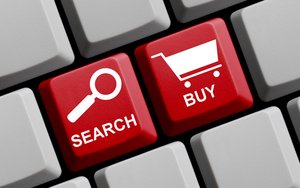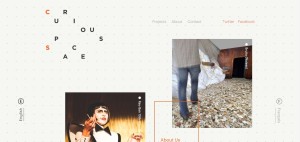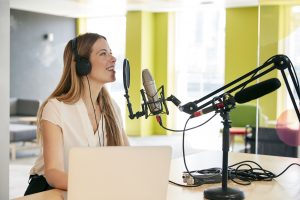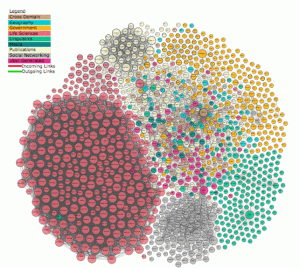 The digital shelf is becoming increasingly competitive. Brick-and-mortar market share doesn’t guarantee an advantage for brands when it comes to ecommerce. Search can help drive traffic through several emerging innovations such as deep learning and artificial intelligence, even on Web sites, but other new models are emerging, taking some marketers by surprise.
The digital shelf is becoming increasingly competitive. Brick-and-mortar market share doesn’t guarantee an advantage for brands when it comes to ecommerce. Search can help drive traffic through several emerging innovations such as deep learning and artificial intelligence, even on Web sites, but other new models are emerging, taking some marketers by surprise.
SearchBlog asked Jonathan Opdyke, CEO at HookLogic, for his take on how this category of marketing and advertising will evolve.
MediaPost: How has ecommerce evolved for the CPG category?
Opdyke: CPG e-commerce has been slow to come to fruition in the U.S. UK grocers were actually first to market due to concentrated geography, spawning a multi-billion-pound CPG ecommerce market with Tesco, ASDA, Sainsbury’s and Ocado trailblazing the way for grocery delivery and click-and-collect. But the U.S. industry is now coming online at a fast pace with Amazon investing big, new entrants like Instacart, Boxed and Jet.com driving model innovation, new momentum with early movers like Peapod, FreshDirect, and Walmart.com and anticipated awakening of sleeping giants like Kroger and Albertson’s. The key factor is a changing consumer mindset around online ordering and a “get it now” app culture.
We’re not alone in our enthusiasm. A recent study from the Boston Consulting Group and the Grocery Manufacturers Association estimated online CPG penetration at just 1% — the lowest of any retail category. However, the GMA forecasts growth to 5% by 2018 and to 10% shortly after. Most importantly, BCG predicts that online sales will represent half of all CPG growth over the next 10 years. When you consider what’s at stake, it’s crucial for CPG to adapt to the realities of ecommerce.
MediaPost: How can digital marketers adjust to this change in shopping behavior for the CPG category?
Opdyke: CPG manufacturers initially spent a lot of energy focusing on their own branded sites, which primarily support their branding goals. A few CPG’s have successful in-house ecommerce operations — particularly for expensive, frequently refilled products like razors and coffee pods that are ripe for subscription models. But most will still rely on retailers that offer consumers the convenience of a large aggregated shopping cart.
The first step for most CPG brands has been to adapt packaging and distribution for ecommerce fulfillment. For example, a brand that typically offers its product in a glass jar sold to retailers in large pallets may now have to convert to plastic containers and smaller cases to support individual distribution from a retailer’s warehouse.
With logistical concerns addressed, brands then need to learn a new skill — online merchandising. Creating online product content and imagery leads to complex questions like whether to display the product in or out of the standard store packaging, in prepared versus raw form, or stand-alone versus being consumed by a satisfied customer. Brands also need to win the battle for limited shelf space on ecommerce sites and ensure every effort is made to stimulate repeat purchases.
While there are tried and true strategies for physical stores, the new world of digital CPG is still being invented. It is critical for brands to be in “test and learn” mode to understand what works and invest in winning strategies to ensure they sustain and grow market share as sales move online.
MediaPost: How have legacy CPG brands revived their traditional advertising model to account for the shift toward digital?
Opdyke: Most CPG companies have been slow to adapt their traditional advertising models. CPGs have always been the great users of television and mass media to reach a broad demographic target, leveraging market mix models to extrapolate correlations and results. Most CPG online strategies have attempted to replicate the same audience buying and measurement models using banner and video ads, yet TV remains hard to beat because consumers are much more task-driven and blind to online ads. Mobile exacerbates the challenge because there is less screen space for advertising, which has spawned more ad formats that interrupt the experience and lead to mass consumer rejection and the growing popularity of ad blockers.
Yet, the potential for better advertising is there. Offline models like Catalina, which delivers post-purchase coupons based on sales data, created a win-win through a welcome consumer experience and effective granular targeting for brands. But granular consumer data is limited offline since most parts of the shopping journey, from traditional advertising to browsing store aisles, can’t easily be tracked. Online data can be much richer when you consider the ability to trace every advertising impression and every shopping interaction, including keyword searches, categories browsed, products viewed, and SKUs added to carts. The potential for a win-win in digital is enticing when you consider the combination of richer profiles with the proliferation of native ad formats. Advertising can actually be more targeted, timely, and less intrusive. In other words more relevant, welcome, effective, and attributable.
MediaPost: How can CPG brands successfully own more of their “online shelf?
There is a myth that the online shelf is an endless aisle. In a grocery store, a shopper may have dozens of choices within immediate view, but on a typical mobile app only three products are visible before scrolling — and the reality is that the majority of browsers buy the brand they see first. Brands that win the digital shelf typically take more market share, similar to brands that have larger physical footprints in grocery stores. The effects become self-fulfilling as search algorithms reward bestsellers, and also because past purchases end up re-ordered via favorites’ list or button that enable ecommerce shoppers to skip browsing the aisle on subsequent visits.
Winning an algorithmically, ordered digital shelf requires new skills in content optimization, pricing and promotion (the ecommerce equivalent of organic search engine optimization), as well as learning new bidding technologies for promoting products such as Amazon and HookLogic Sponsored Products (the equivalent of paid search). Brands need to become digital performance marketing experts in ecommerce, much as retailers had to learn how to leverage and optimize Google to grow their sales. Brands like Reckitt Benckiser have been on the cutting edge of this trend, leveraging HookLogic to drive sales across dozens of retailers, while closely monitoring cost per sale.
The shelf also extends well beyond a given retailer. While most grocery shopping journeys involve a single physical store and take 30 to 60 minutes, online shopping is much more complex. For starters, a consumer may visit multiple online retailers before deciding where to place an order. A winning brand strategy involves being featured prominently in all of them. Even more uniquely, the online shopping journey may last several days as consumers start a shopping cart early in the week and set a delivery time later in the week. From the moment a cart is started, the digital shelf can extend outside the retailer Web site or app to any digital medium where a product can be suggested, leveraging data about the shopper and current knowledge of their shopping cart.
And the consumer may just appreciate the suggestion and forget it was advertising.
(25)
Report Post







